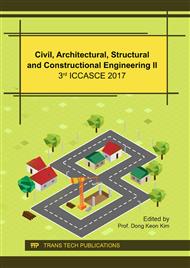p.259
p.263
p.269
p.275
p.281
p.286
p.291
p.296
p.302
Thermal Conductivity and Mechanical Properties of the Rubber Stopper Filled with ZnO Nanograins
Abstract:
ZnO nanograins (nZnO) were synthesized by a precipitation method. The nZnO exhibited the average grain size of ~30 nm and the specific surface area of 28.24 m2 g-1. Then, it was incorporated into the ethylene propylene diene monomer (EPDM) rubber and produced to be a rubber stopper. This work studied the effect of nZnO and conventional ZnO (cZnO) as a cure activator on the thermal conductivity and mechanical properties of the rubber stopper. As the content of nZnO increased, the thermal conductivity and mechanical properties are also increased. The obtained results could be reduced successfully from 5 to 2 parts per hundred parts of rubber (phr) compared with a cZnO because nZnO provides a satisfactory thermal conductivity and mechanical properties. Moreover, it also gives uniform completely vulcanized for thick rubber product due to swelling value (Q) between outer and inner portion of rubber stopper is less difference. In this work is concluded that the dosage, grain sizes and grain boundary of ZnO are effective parameter in the thermal conductivity and mechanical properties of the rubber stopper.
Info:
Periodical:
Pages:
281-285
Citation:
Online since:
February 2018
Authors:
Keywords:
Price:
Сopyright:
© 2018 Trans Tech Publications Ltd. All Rights Reserved
Share:
Citation:


